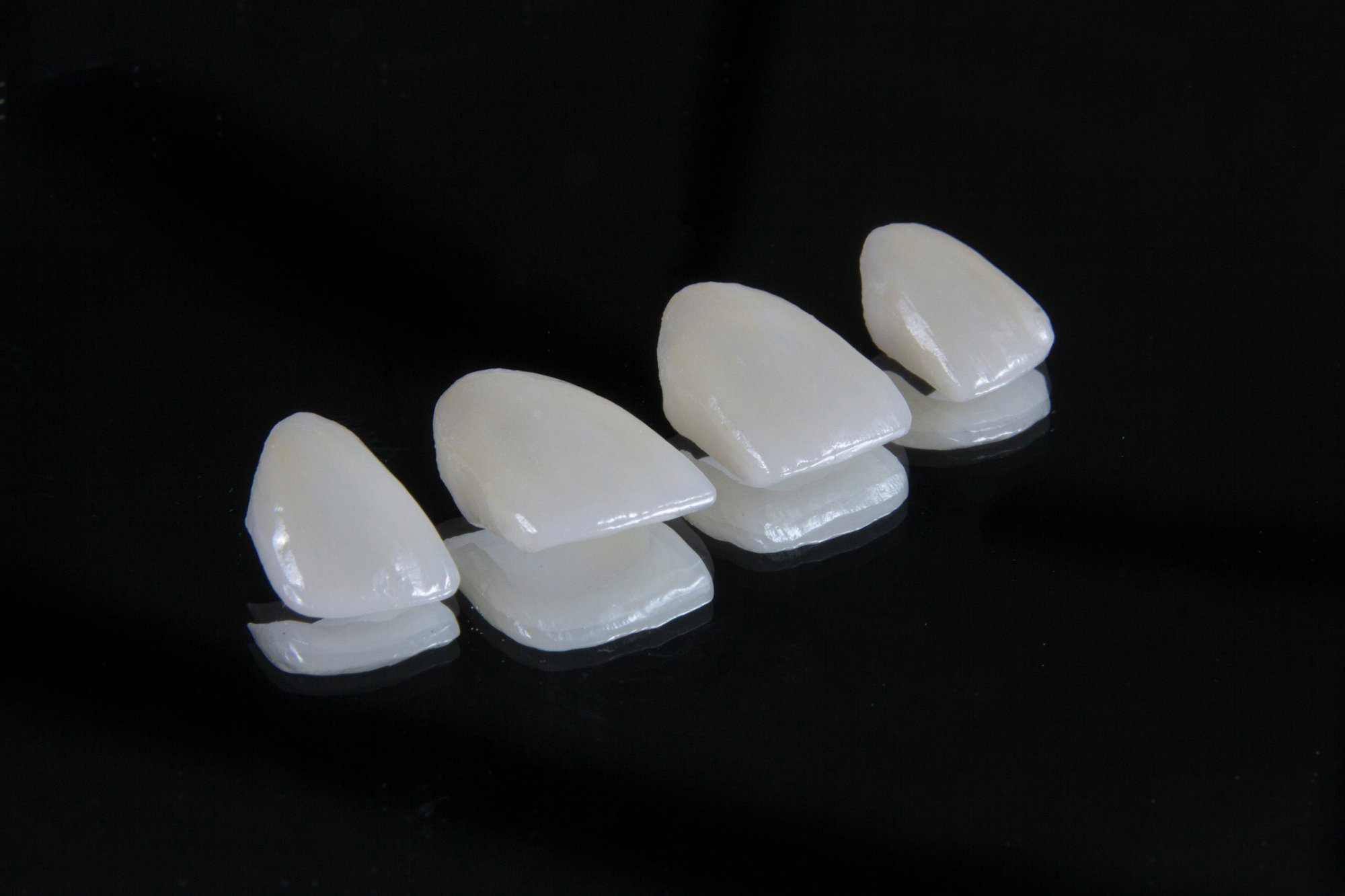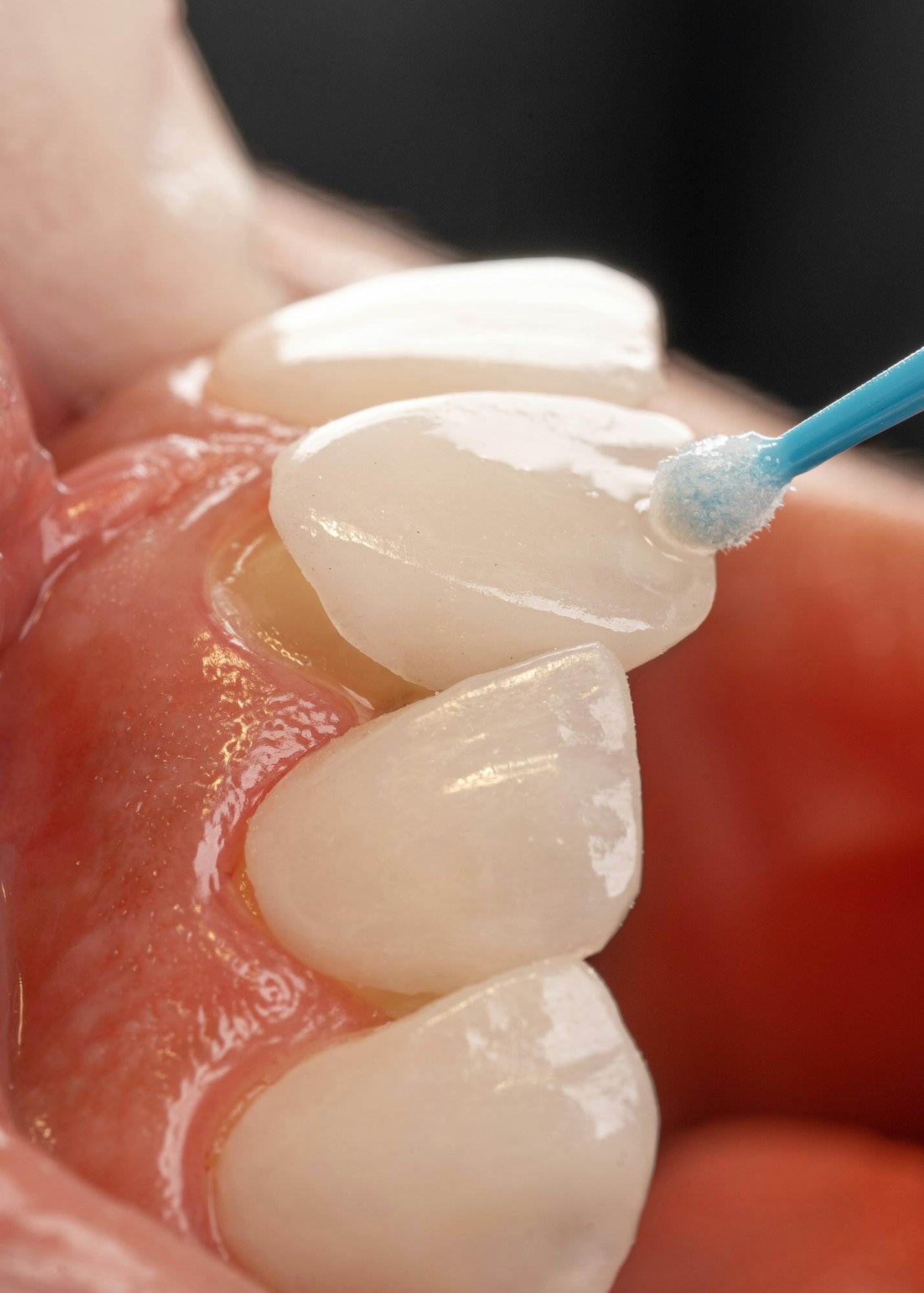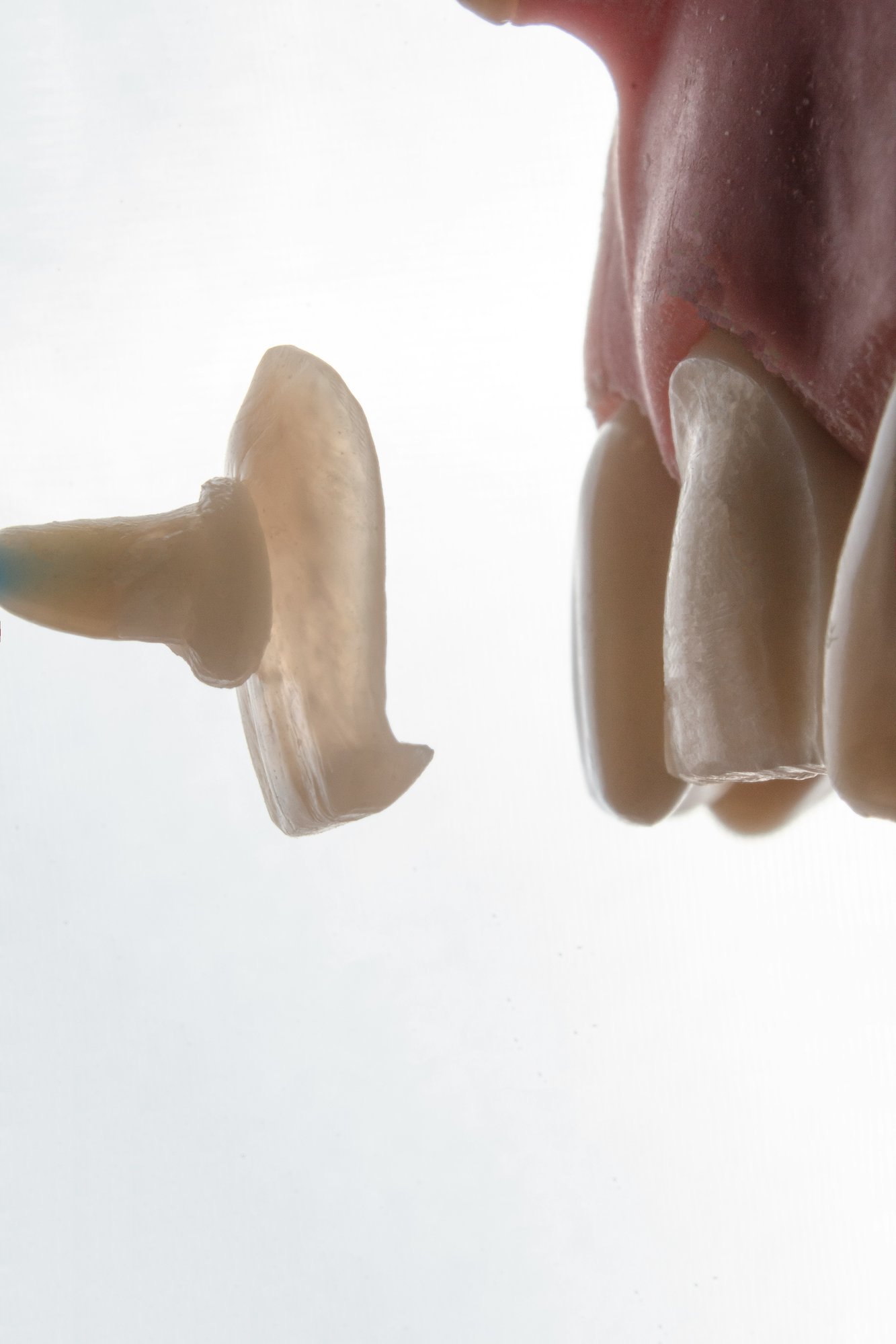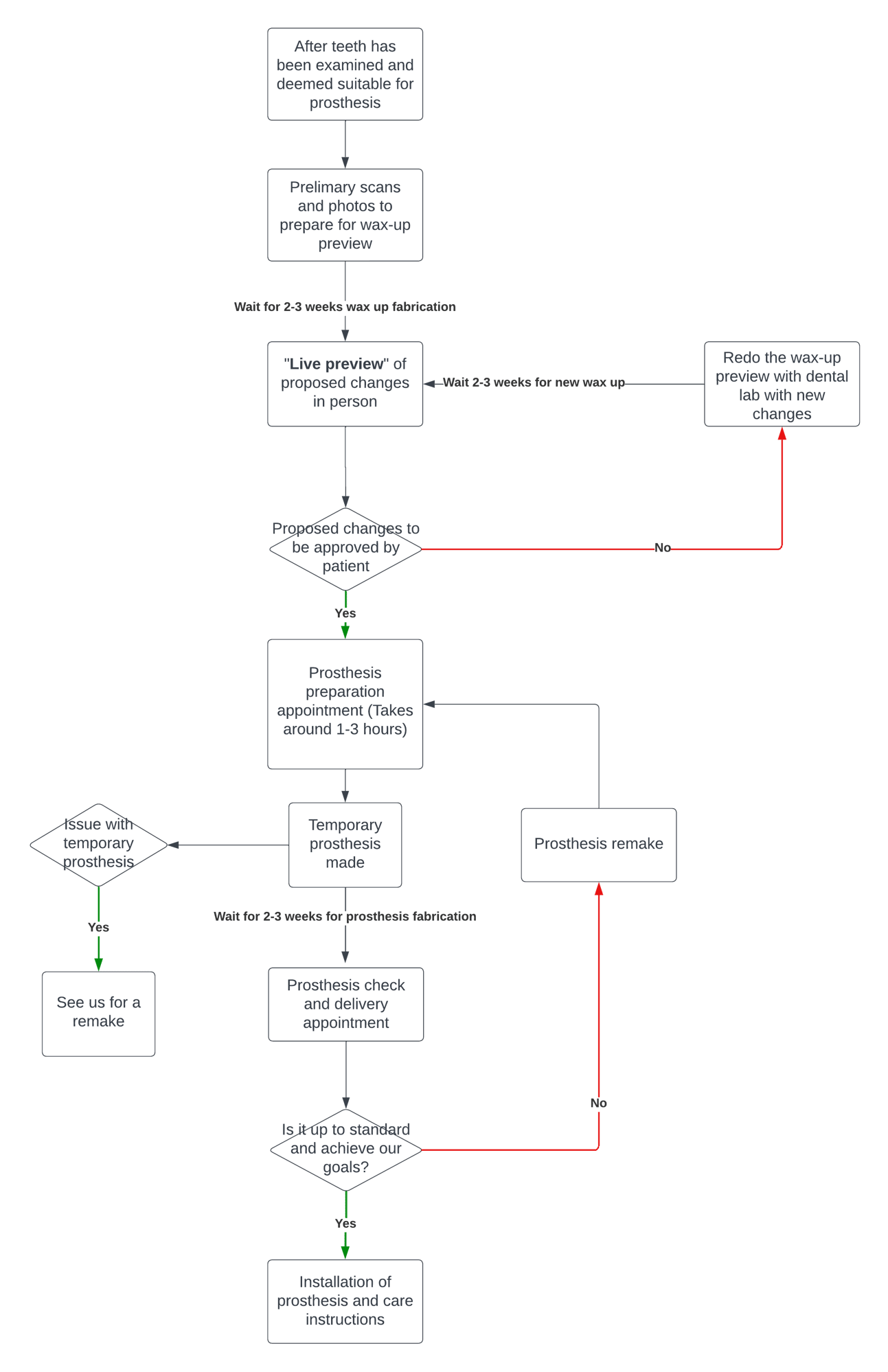Veneers
What is veneers?
In construction, a veneer (such as a brick veneer) a wall construction method where the outside face of the wall is brick and the internal is stud frame in either steel or wood. It provides no structural support to the overall building, and it exists to change the looks of the building.

Dental veneers are exactly the same, it changes the colour and some shape of your teeth. But it does not provide any structural support or strength to your tooth. It is there just for cosmetics!



What types of veneers are available?
There are two types of veneers in dentistry:
-
Indirect porcelain veneers - made from a dental lab using ceramics/porcelain as pictured above.
-
Direct composite veneers - made in chair by dentist using composite material (plastics).
What are the similarities and differences between these two?
For both types, the similarities are:
-
It will be planned and made by a dentist.
-
Will require your input and feedback to set goals and achieve results.
-
An artificial thin layer of material will be applied on the visible part of your teeth.
-
Both are considered very conservative (minimal tooth cutting) and relatively long lasting.
The key differences between the two are material and how it’s installed:
Indirect porcelain veneers
-
Made from ceramics/porcelain
-
Veneer polish lasts longer compared to composite.
-
Harder to repair when you chip or break -> most times we need to make new one from scratch.
-
The better option of the two types as it can almost mimic natural tooth texture.
Direct composite veneers
-
Made from composite material (plastics)
-
Veneer polish does not last as long as porcelain due to the material.
-
Easier to repair when you chip or break it.
-
Will require more maintenance appointments for further polishing and touch up.
How to you prepare a veneer?
Here’s a summary flow chart of generally how a veneer is made (click on image in mobile to make it larger):

For those who prefer reading:
-
We check and look at your teeth to make sure that they are suitable for veneers
-
Next is we will take photos, get to know the colour of your teeth and do scans in order to make wax up preview (can take 2-3 weeks for it to get made)
-
Next appointment is to place the wax up preview in your mouth so you can see the proposed changes in person. If it is approved, we will then start to prepare you for the veneer.
-
Preparation appointment
-
We numb your tooth up with local anesthetics.
-
Tooth will be reshaped to allow the future veneer to sit properly (can take between 1-3 hours).
-
A scan (or impression) will be taken so that we can send it to a dental lab to manufacture your veneer.
-
A temporary crown is placed to protect the teeth while custom veneer is being made in an Australian based dental laboratory.
-
-
Typical turnaround time is around 2-3 weeks
-
Next appointment
-
We numb your tooth up again with local anesthetics.
-
We check that your veneer is made up to standard.
-
If it is, installation will be done on the same appointment.
-
If not, we will redo the veneer
-
Where do you have your veneers made?
We outsource our porcelain veneers to local Australian labs and work closely with them. I usually pick labs which are located in either locally in Sydney or all the way to Melbourne depending on the type of job required. We try to support our local technicians.
For direct composite veneers - we will make them in house for you.
So what’s the best for me?
Each person has its own unique needs so it is difficult to tell. The best way to know what you need is to contact us and we’ll sit down with you to go through the best option with you in person.
